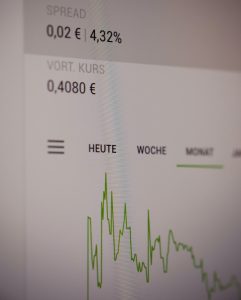Forex trading is a popular investment option for individuals who wish to earn profits from currency fluctuations. However, the process of learning to forex trade can be challenging, especially for beginners. It requires dedication, discipline, and a willingness to learn continuously. In this article, we will provide an in-depth guide on how to learn forex trading.
1. Understand the Basics of Forex Trading
The first step to learning forex trading is to understand the basic concepts and terminologies used in the forex market. Forex trading is the process of buying or selling currencies in the foreign exchange market. The forex market is the largest financial market in the world, with a daily turnover of over $5 trillion.
To begin, you need to learn about currency pairs, pip, leverage, margin, and spread. Currency pairs are the two currencies that are being traded against each other, such as EUR/USD or USD/JPY. Pip or percentage in point is the smallest unit of measurement in forex trading. Leverage is the amount of money you can borrow from a broker to increase your trading capacity. Margin is the amount of money you need to deposit with the broker to open a position. Spread is the difference between the bid and ask price of a currency pair.
2. Choose a Reliable Broker
The next step in learning to forex trade is to choose a reliable broker. A broker is a financial institution that provides access to the forex market. It is important to choose a broker that is regulated by a reputable financial authority, such as the Financial Conduct Authority (FCA) in the UK, the Australian Securities and Investments Commission (ASIC), or the Commodity Futures Trading Commission (CFTC) in the US. A regulated broker ensures that your funds are safe and secure, and that the broker operates with integrity and transparency.
3. Develop a Trading Plan
Before you start trading, it is important to develop a trading plan. A trading plan is a set of guidelines that define your trading strategy, including your entry and exit points, risk management, and trading goals. It is important to have a trading plan to ensure that you make informed decisions and avoid emotional trading.
4. Practice with a Demo Account
Once you have chosen a broker and developed a trading plan, the next step is to practice with a demo account. A demo account is a simulation of the live trading environment, where you can trade with virtual money without risking your own funds. It is important to practice with a demo account to gain experience and confidence in your trading strategy.
5. Learn Technical Analysis
Technical analysis is the study of historical price movements and chart patterns to identify future price movements. It is an essential skill for forex traders, as it helps them to make informed trading decisions. Technical analysis involves the use of various tools, such as trend lines, support and resistance levels, and indicators, to identify patterns and trends in the market.
6. Understand Fundamental Analysis
Fundamental analysis is the study of economic and political factors that affect currency prices. It involves analyzing economic indicators, such as GDP, inflation, and employment data, as well as political events, such as elections and geopolitical tensions. Fundamental analysis helps forex traders to understand the underlying factors that drive currency movements and make informed trading decisions.
7. Develop a Risk Management Strategy
Risk management is an essential aspect of forex trading. It involves identifying and managing the risks associated with trading, such as market volatility, leverage, and margin. It is important to develop a risk management strategy to protect your capital and minimize your losses. A risk management strategy should include setting stop-loss orders, using proper leverage, and diversifying your portfolio.
Conclusion
Learning to forex trade requires dedication, discipline, and a willingness to learn continuously. It is important to understand the basic concepts and terminologies used in the forex market, choose a reliable broker, develop a trading plan, practice with a demo account, learn technical and fundamental analysis, and develop a risk management strategy. By following these steps, you can gain the knowledge and experience necessary to become a successful forex trader.





